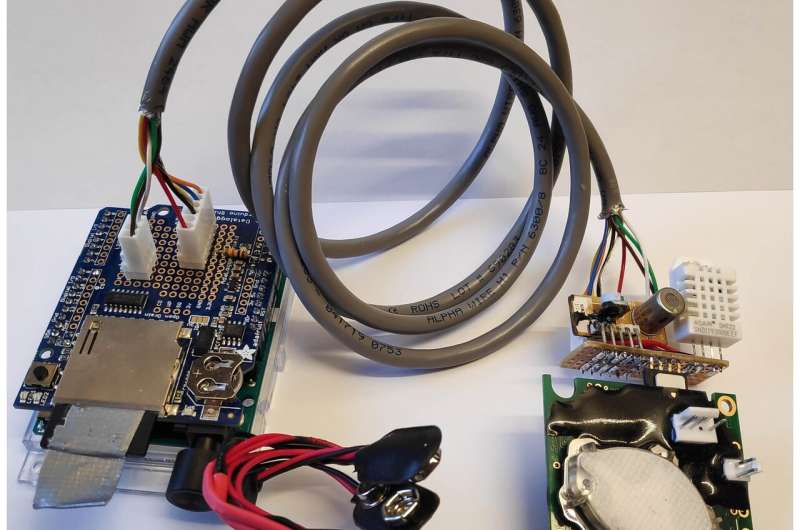Make your own greenhouse gas logger

Researchers at Linköping University's Department of Thematic Studies, Environmental Change, have developed a simple logger for greenhouse gas flows. It is built using inexpensive and easily available parts, and provides data on levels of methane, carbon dioxide, temperature and humidity.
"So far, measurement instruments have been so expensive that society's mapping of greenhouse gas emissions has had to rely on rough models. It's extremely important that we can make lots of proper measurements locally, so we can test whether measures for reducing emissions actually work. We hope that our simple and cost-efficient logger can contribute to more such measurements" says David Bastviken, professor at Environmental Change, and author of an article in Biogeoscience.
A current limitation when it comes to determining the greenhouse gas fluxes has been the lack of reliable low-cost measurement methods that can be widely available in society. In 2015, David Bastviken and colleagues described and published a logger for carbon dioxide, which is now used for various types of environmental measurements. However for methane, more complicated and expensive measurement equipment has so far been required. In the current article in Biogeoscience, the researchers describe an inexpensive sensor for methane.
Methane, CH4, is one of the most important long-lived greenhouse gases which contributes greatly to global warming. Since the 1750s, its relative increase in the atmosphere has been greater than for other greenhouse gases. There are many different sources and examples including incomplete combustion, handling of natural gas and biogas, and microbial production in agriculture, wetlands and lakes. However the large number of sources that can vary greatly in ways not fully understood makes it difficult to quantify fluxes and to propose best practices for flux mitigation. In addition, the discovery that lakes, rivers and flooded forests are large sources of methane, made by David Bastviken and his colleagues as recently as 2011 and later, shows that major methane sources are still being discovered.
"We have now built and tested a simple logger based on the open-source Arduino hardware. The parts are available in many electronics stores; they can be ordered online and cost about 200 euro. We have also developed more precise ways to calibrate the methane sensor, to enable the measurement of greenhouse gas fluxes at a very low cost," says David Bastviken.
The researchers hope that the logger will make it easier for all interested, and in e.g. education and environmental monitoring, to monitor greenhouse gas emissions.
"We also propose simplified but satisfactory ways to calibrate the sensors that don't require continuous access to advanced research laboratories. This can make measurements easier, for instance in developing countries," says David Bastviken.
Complete instructions for building a logger, and various calibration methods, can be found in the article and in accompanying extra materials, which are freely accessible at: www.biogeosciences.net/17/3659 … -2020-supplement.pdf
More information: David Bastviken et al. Technical note: Facilitating the use of low-cost methane (CH4) sensors in flux chambers – calibration, data processing, and an open-source make-it-yourself logger, Biogeosciences (2020). DOI: 10.5194/bg-17-3659-2020
Journal information: Biogeosciences
Provided by Linköping University




















